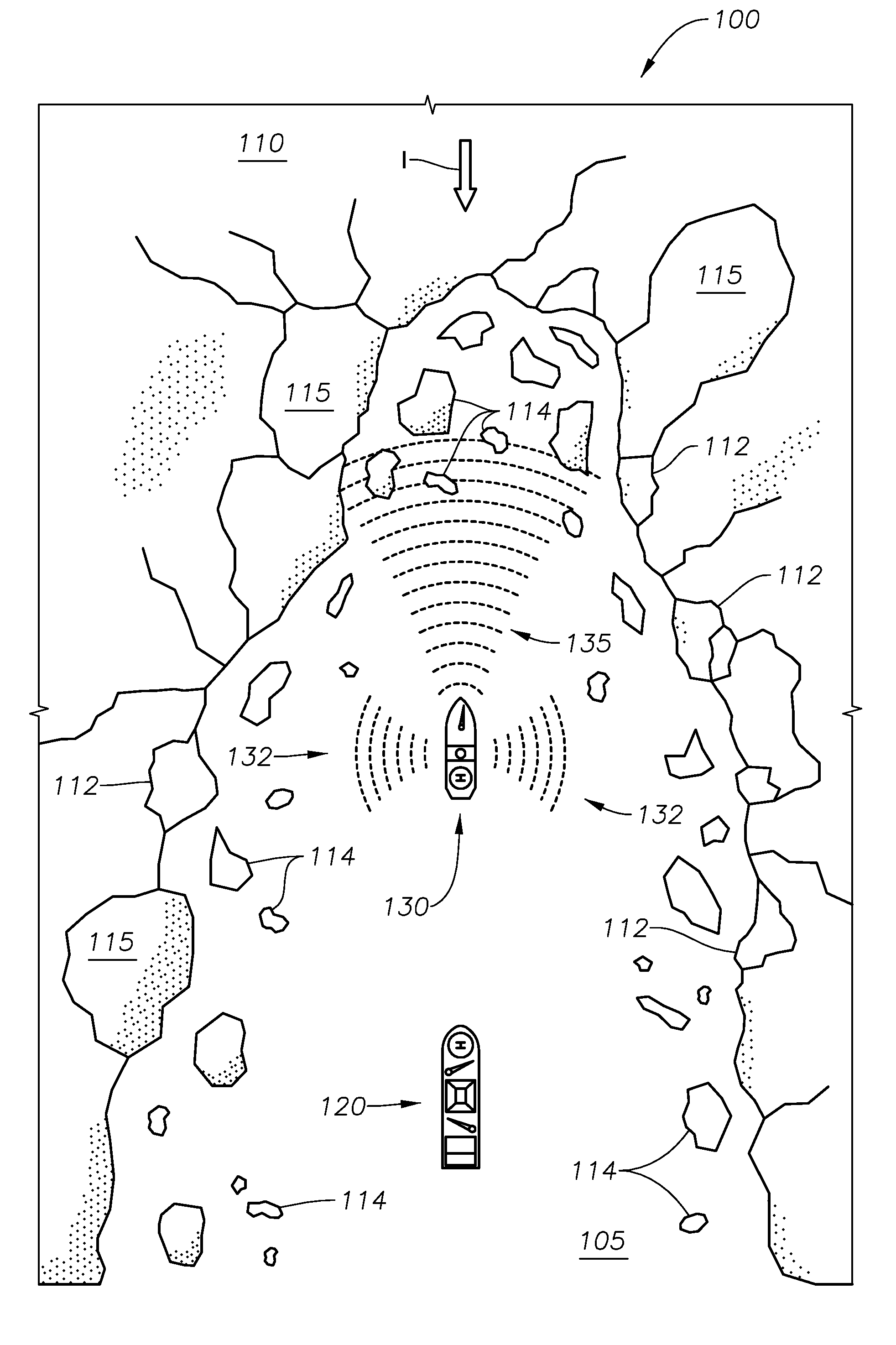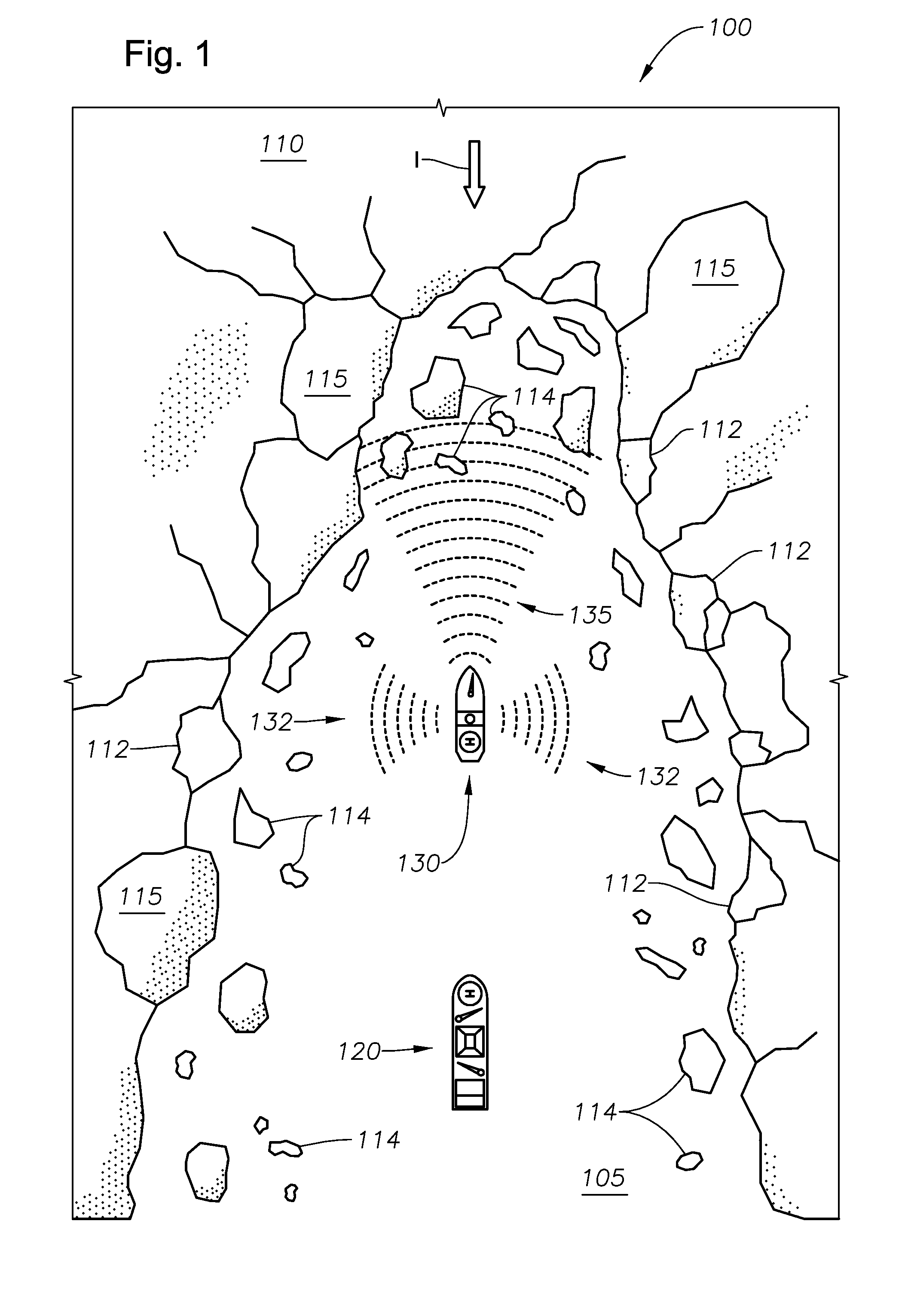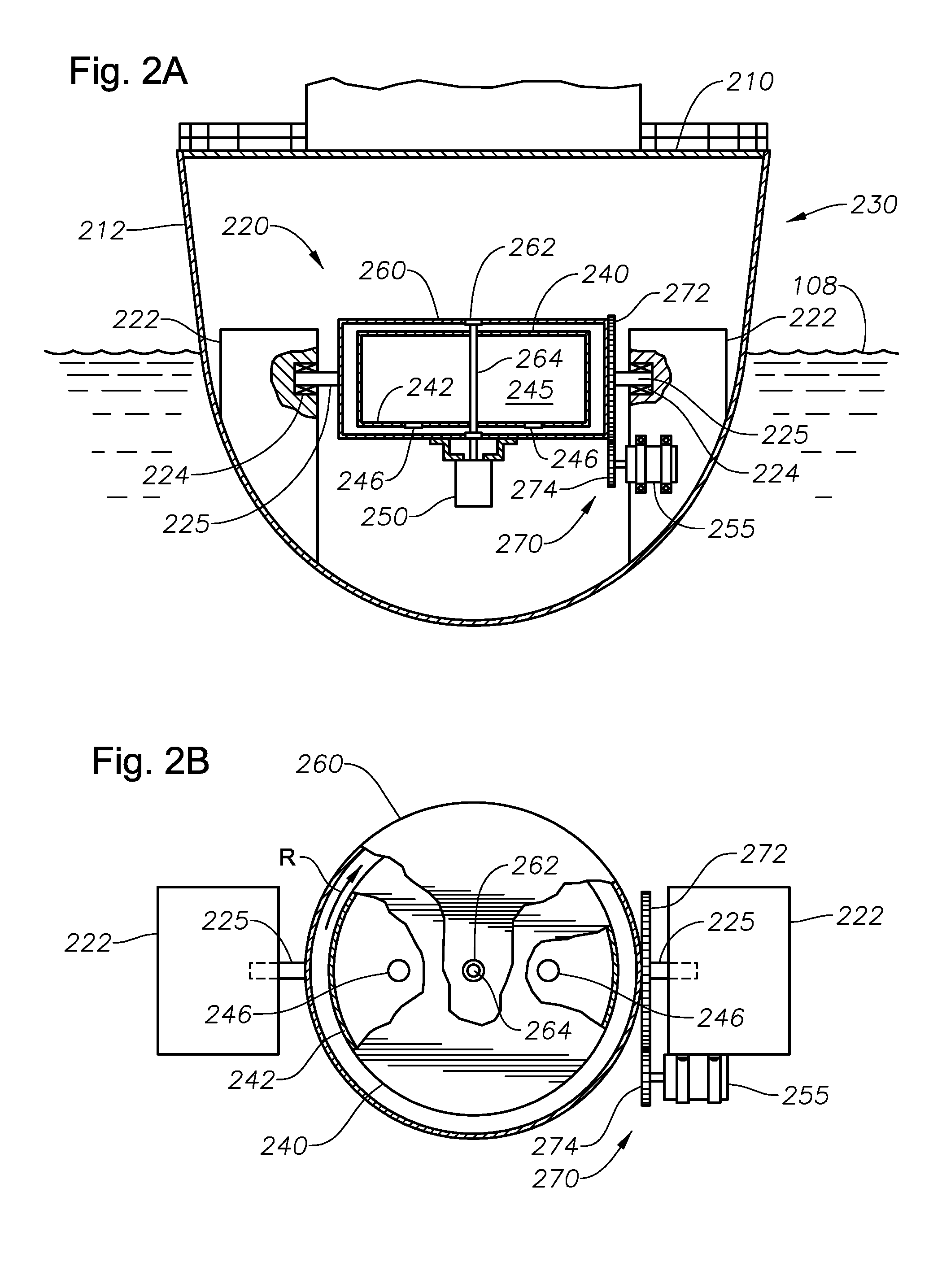Ice Break-Up Using Artificially Generated Waves
a technology of artificial generation and ice break-up, which is applied in the direction of ice breakers, special-purpose vessels, transportation and packaging, etc., can solve the problem of creating ice break-up waves
- Summary
- Abstract
- Description
- Claims
- Application Information
AI Technical Summary
Benefits of technology
Problems solved by technology
Method used
Image
Examples
first embodiment
First, FIG. 2A provides a cross-sectional view of an intervention vessel 230 having a water-agitating mechanism, in a The intervention vessel 230 includes a deck 210 and a hull 212. The water-agitating mechanism is shown within the hull 212 of the vessel 230 at 220.
The vessel 230 is representative of the intervention vessel 130 of FIG. 1. In this respect, the vessel 230 is a ship-shaped vessel preferably having ice-breaking capabilities. In addition, the vessel 230 preferably has a large water displacement for generating substantial surface waves 135 during motion.
In the arrangement of FIG. 2, the water-agitating mechanism 230 is a gryoscopic system. Gyroscopes are commonly used in modern marine structures for providing stability to vessels deployed on the high seas. Stabilization increases passenger comfort and safety, reduces wear and tear on equipment, and increases the accuracy of warship artillery.
A gryoscopic system uses angular momentum and precession to counter ship oscilla...
second embodiment
FIG. 3 is a side view of an intervention vessel 330 using a water-agitating mechanism 320 in a The intervention vessel 330 includes a deck 310 and a hull 312. The vessel 330 is representative of the intervention vessel 130 of FIG. 1. In this respect, the vessel 330 is a ship-shaped vessel preferably having ice-breaking capabilities. However, it is understood that the vessel 330 may be of any shape. For example, a non-ship-shaped vessel such as an offshore working platform may utilize the water-agitating mechanism 320.
In the vessel 330 of FIG. 3, the water-agitating mechanism 320 comprises a plurality of pneumatic guns 322. The pneumatic guns 322 are suspended from cables 324. The cables 324, in turn, are supported by cable rods 326 extending laterally from the vessel 330. The pneumatic guns 322 extend into the marine body 105. Alternatively, in some embodiments the pneumatic guns 322 may be extended or towed behind the vessel.
The pneumatic guns 322 are preferably large-diameter, cy...
third embodiment
FIG. 4 is a cross-sectional view of an intervention vessel 430 using a water-agitating mechanism 420 in a The intervention vessel 430 includes a deck 410 and a hull 412. The vessel 430 is again representative of the intervention vessel 130 of FIG. 1. In this respect, the vessel 430 is a ship-shaped vessel preferably having ice-breaking capabilities. However, it is understood that the vessel 430 may be of any shape.
In the vessel 430 of FIG. 4, the water-agitating mechanism 420 comprises a plurality of paddles 422. The paddles 422 are supported by oars 424. The oars 424, in turn, are supported by a rotating shaft 426 that extends laterally from each side of the vessel 430.
In order to generate waves 135, the shaft 426 is rotated. Rotation may be clockwise, counter-clockwise, or intermittently clockwise and counter-clockwise. Rotation of the shaft 426 is driven by a motor assembly 440. The motor assembly 440 includes a motor 442. The motor 442 is supported by a stand or platform 446. T...
PUM
 Login to View More
Login to View More Abstract
Description
Claims
Application Information
 Login to View More
Login to View More - R&D
- Intellectual Property
- Life Sciences
- Materials
- Tech Scout
- Unparalleled Data Quality
- Higher Quality Content
- 60% Fewer Hallucinations
Browse by: Latest US Patents, China's latest patents, Technical Efficacy Thesaurus, Application Domain, Technology Topic, Popular Technical Reports.
© 2025 PatSnap. All rights reserved.Legal|Privacy policy|Modern Slavery Act Transparency Statement|Sitemap|About US| Contact US: help@patsnap.com



